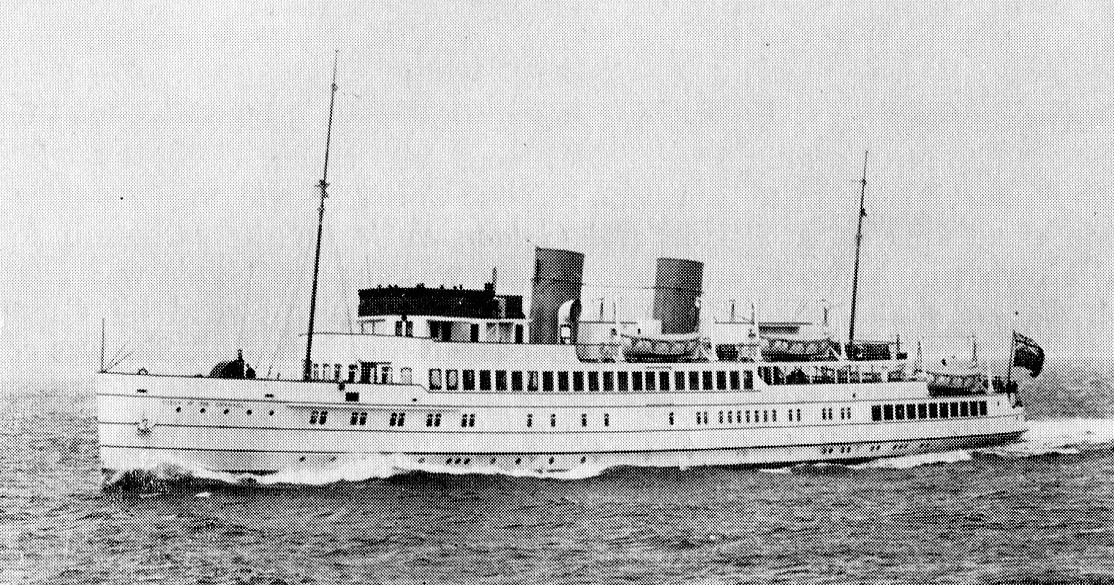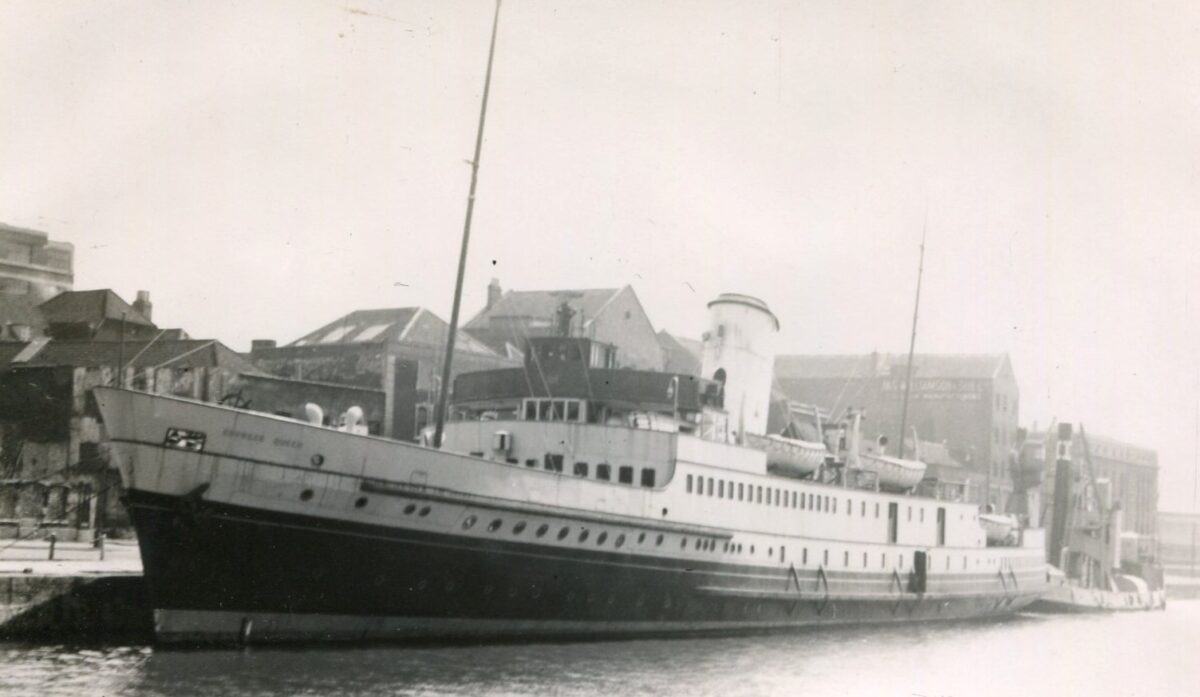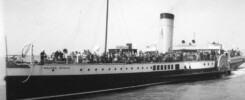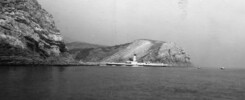
On Wednesday 13th August 1952 Cardiff Queen was scheduled to run from Hastings (8.15am), Eastbourne (9.15am) and Brighton (10.30am) to Shanklin, Isle of Wight (1.30pm – 3.30m) then back to Brighton (6.20pm), Eastbourne (7.45pm) and Hastings (8.45pm) at a fare of 22/- (£32 in today’s money).

This was the first season that Cardiff Queen was rostered to run from the Sussex Coast piers on a schedule which took her to Folkestone in the east and the the Isle of Wight piers in the west. She did not have cross a Channel Passenger Certificate and in any case, at this stage, “No Passport” trips to France were still not permitted by the Government
Before the war P & A Campbell had generally rostered three paddle steamers, and occasionally four, for their services from Brighton, Eastbourne and Hastings. After the war, with the exception of 1948 and 1949 when their new turbine steamer Empress Queen was joined by their paddle steamer Britannia, they only ever rostered one with Empress Queen on station 1947 to 1950, Cardiff Queen in 1952 and 1953, Glen Gower from 1954 to 1956 and finally the smaller Diesel Crested Eagle on charter from the GSN in 1957. P & A Campbell did not provide one of their ships for service there in 1951.
Before the war the Sussex Coast market was divided into three main segments: local trips from and between Brighton, Eastbourne and Hastings; longer coastal voyages to Folkestone in the east and the Isle of Wight in the west with occasional extensions further afield when the tides suited to Southampton and/or Bournemouth; and across the Channel to Boulogne.

Cross Channel “No-Passport” trips had boomed from the Thames and Sussex Coast piers in the 1920s and 1930s and this led the General Steam Navigation Company to build the large and well appointed motor vessels Queen of the Channel (1935), Royal Sovereign (1937) and Royal Daffodil (1939) to cater for this expanding market.

Not to be outdone, P & A Campbell followed suit and ordered their own large and equivalent vessel Empress Queen, which was powered by steam turbines, for their cross Channel trade from the Sussex piers. Unfortunately the timing of her order wasn’t great as she was not delivered until 1940, the year after Royal Daffodil had arrived. By then war had broken out and the excursion market had collapsed.
Returned to peacetime activities after the war Empress Queen was positioned on the Sussex Coast each summer from 1947 to 1950 but with the cross Channel service for which her large capacity was designed unavailable to her she was not a success. She was a big ship to get in and out of some of the piers where there wasn’t a lot of water at low tide and screw driven vessels are harder to handle than paddlers in shallow water as the propellers don’t bite.
For 1951 Empress Queen was transferred to test the day trip market from Torquay, including to the Channel Islands, but that was not a success either and after that she did not run again for Campbells eventually being bought in 1955 for further service in Greece.
In 1959 George Nott Industries, which had just bought Dover Car ferry firm Townsend Ferries, also bought out P & A Campbell and with the losses incurred on the paddle steamer services used to offset the profits on the Dover to Calais route in a clever accountantly sort of way, cash was freed up by Corporation Tax savings enabling them to build the first of a series of new purpose designed car ferries for Dover from 1962, the first of which was called Free Enterprise.
This acquisition of P & A Campbell also included the booking offices on the piers at Brighton, Eastbourne and Hastings so with “No-Passport” trips by then allowed they were freshened up and dusted down with tickets sold from them for a coach connection from the Sussex resorts to join Free Enterprise at Dover for the run across to Calais. So cross Channel trip were once again available from Brighton, Eastbourne and Hastings albeit by this roundabout route.
But on the 13th August 1952 when Cardiff Queen ran her day trip to the Isle of Wight all this, including a resumption of “No Passport” trips, still lay well in the future.
Kingswear Castle returned to service in 2023 after the first part of a major rebuild which is designed to set her up for the next 25 years running on the River Dart. The Paddle Steamer Kingswear Castle Trust is now fund raising for the second phase of the rebuild. You can read more about the rebuilds and how you can help if you can here.
John Megoran
This article was first published on 13th August 2021.


